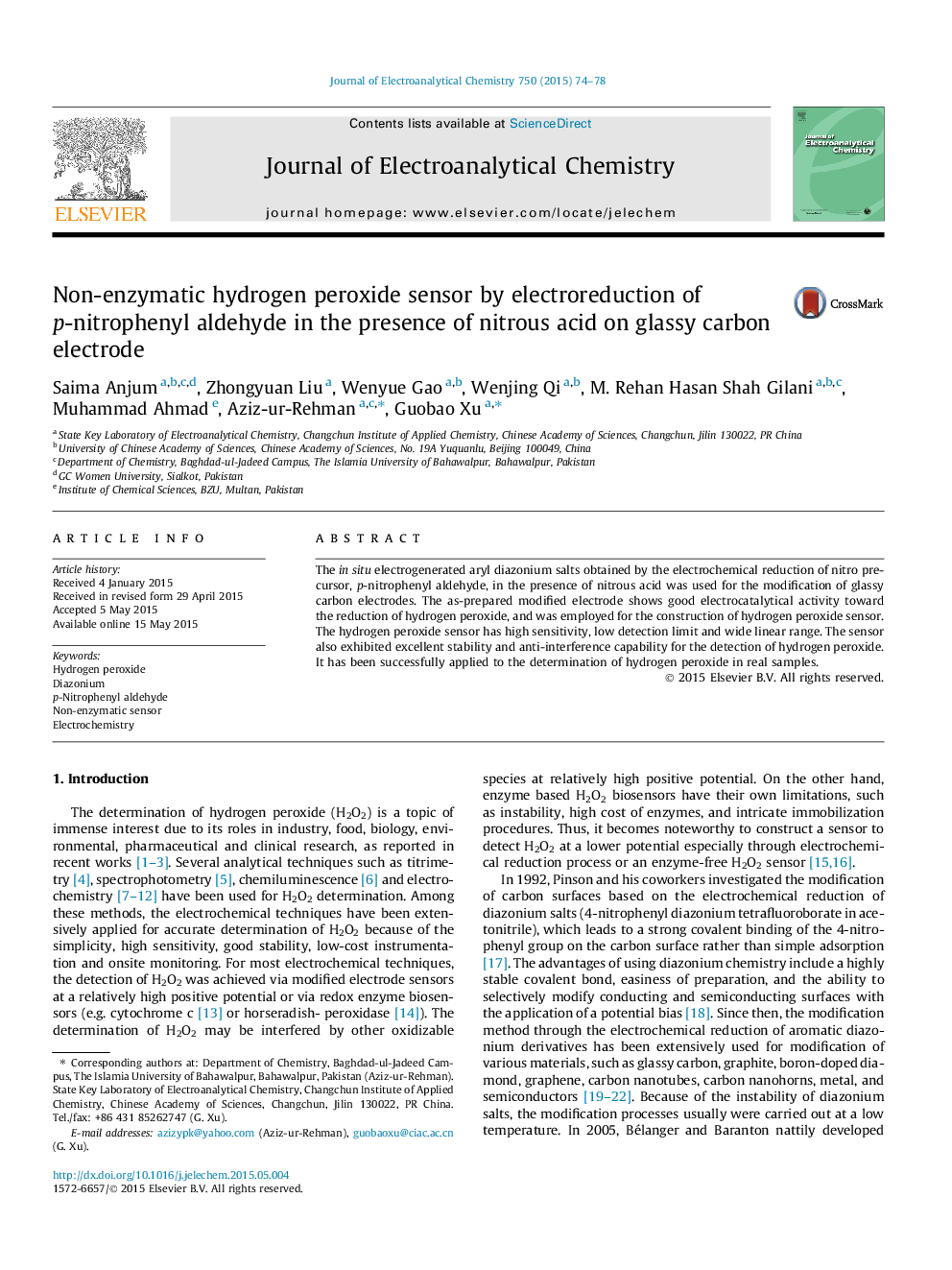| Article ID | Journal | Published Year | Pages | File Type |
|---|---|---|---|---|
| 218353 | Journal of Electroanalytical Chemistry | 2015 | 5 Pages |
•A non-enzymatic H2O2 sensor based on diazonium electrochemistry is developed.•It is fabricated by the covalent modification of GCE by diazonium electrochemistry.•Diazonium salt is in situ electrogenerated from a nitro precursor.•The sensor exhibits fine electrocatalytic activity toward the reduction of H2O2.•The sensor has high sensitivity, wide linear range, and good selectivity.
The in situ electrogenerated aryl diazonium salts obtained by the electrochemical reduction of nitro precursor, p-nitrophenyl aldehyde, in the presence of nitrous acid was used for the modification of glassy carbon electrodes. The as-prepared modified electrode shows good electrocatalytical activity toward the reduction of hydrogen peroxide, and was employed for the construction of hydrogen peroxide sensor. The hydrogen peroxide sensor has high sensitivity, low detection limit and wide linear range. The sensor also exhibited excellent stability and anti-interference capability for the detection of hydrogen peroxide. It has been successfully applied to the determination of hydrogen peroxide in real samples.
